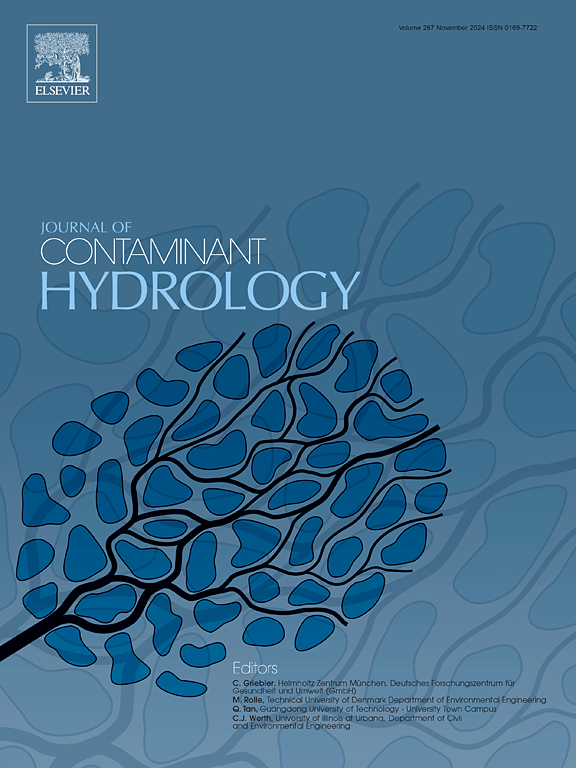Ecotoxicological Effects of Nanoplastic and Microplastic Polystyrene Particles on Hyalella azteca: A Comprehensive Study on the Impact of Physical and Chemical Surface Properties
IF 3.5
3区 环境科学与生态学
Q2 ENVIRONMENTAL SCIENCES
引用次数: 0
Abstract
The ecotoxicological effects of nanoplastic (NPs) and microplastic (MPs) polystyrene particles' (PS) on Hyalella azteca were studied in three tests designed to investigate various hypotheses and explore potential mechanisms of interaction between MPs, NPs and this species. The following materials were used: fluorescent nanoplastic nanoPS of 15–18 nm diameter, non-modified nanoPS 25 nm, and functionalized (aminometyl)polystyrene (PS-NH2). Short-term exposure of 7 and 14 days, and long-term exposure of 42 days, were conducted using three different types of PS at varying concentrations (0.01, 0.18, 1, 18, 180 mg L−1). The experiments were carried out through two methods: PS introduced via food and PS dispersed in the environment (referred to as the “medium”). The effects were comprehensively assessed by measuring the activity of selected oxidative stress biomarkers (acetylcholinesterase AChE, catalase CAT, and glutathione s-transferase GST), and monitoring parameters such as size, growth, reproduction rate, and the presence of possible malformations. The statistically significant effect was observed with PS-NH2 (37–74 μm) and fluorescent nanoPS (15–18 nm), whereas nanoPS of 25 nm were nearly inert. The discussion is focused on four observed aspects: (i) the impact of the surface characteristics and functional group modifications of PS particles on their overall effect on biota, (ii) the limitations of using a typical concentration parameter for tests comparison, with a proposal to adopt total surface area of MPs and NPs instead – reflecting the overall surface exposed to the environment, rather than solely relying on the mass or volume, (iii) the influence of feeding regimen (exposure at varying concentrations in food or medium compared to no exposure) on the ecotoxicological effect, and (iv) the potential of Hyalella azteca as a sentinel species for monitoring microplastic transport in both freshwater and brackish waters environments. Finally, the physical and chemical properties of all three PS types were characterized to better understand their mutual interaction with biota from the material perspective.

纳米塑料和微塑料聚苯乙烯颗粒对阿兹特克透明菌的生态毒理学效应:物理和化学表面性质影响的综合研究
研究了纳米塑料(NPs)和微塑料(MPs)聚苯乙烯颗粒(PS)对阿兹特克透明菌(Hyalella azteca)的生态毒理学效应,探讨了纳米塑料(NPs)、微塑料(MPs)聚苯乙烯颗粒(PS)与该物种相互作用的可能机制。采用以下材料:直径为15-18 nm的荧光纳米塑料纳米ops、直径为25 nm的未改性纳米ops和功能化(氨基甲基)聚苯乙烯(PS-NH2)。使用不同浓度(0.01、0.18、1、18、180 mg L−1)的三种不同类型的PS,短期暴露7天和14天,长期暴露42天。实验通过两种方法进行:通过食物引入PS和分散在环境中PS(简称“培养基”)。通过测量选定的氧化应激生物标志物(乙酰胆碱酯酶AChE、过氧化氢酶CAT和谷胱甘肽s-转移酶GST)的活性,以及监测大小、生长、繁殖率和可能出现的畸形等参数,对效果进行了全面评估。PS-NH2 (37 ~ 74 μm)和荧光纳米ops (15 ~ 18 nm)的效果具有统计学意义,而25 nm的纳米ops几乎是惰性的。讨论集中在四个观察到的方面:(i) PS颗粒的表面特征和官能团修饰对其对生物群的总体影响的影响;(ii)使用典型浓度参数进行测试比较的局限性,并建议采用MPs和NPs的总表面积,以反映暴露于环境的整体表面,而不是仅仅依赖质量或体积;(三)饲养方式(与不接触相比,接触不同浓度的食物或介质)对生态毒理学效应的影响,以及(四)阿兹特克透明菌作为监测淡水和咸淡水环境中微塑料运输的哨兵物种的潜力。最后,对3种PS的理化性质进行了表征,以便从物质角度更好地了解它们与生物群的相互作用。
本文章由计算机程序翻译,如有差异,请以英文原文为准。
求助全文
约1分钟内获得全文
求助全文
来源期刊

Journal of contaminant hydrology
环境科学-地球科学综合
CiteScore
6.80
自引率
2.80%
发文量
129
审稿时长
68 days
期刊介绍:
The Journal of Contaminant Hydrology is an international journal publishing scientific articles pertaining to the contamination of subsurface water resources. Emphasis is placed on investigations of the physical, chemical, and biological processes influencing the behavior and fate of organic and inorganic contaminants in the unsaturated (vadose) and saturated (groundwater) zones, as well as at groundwater-surface water interfaces. The ecological impacts of contaminants transported both from and to aquifers are of interest. Articles on contamination of surface water only, without a link to groundwater, are out of the scope. Broad latitude is allowed in identifying contaminants of interest, and include legacy and emerging pollutants, nutrients, nanoparticles, pathogenic microorganisms (e.g., bacteria, viruses, protozoa), microplastics, and various constituents associated with energy production (e.g., methane, carbon dioxide, hydrogen sulfide).
The journal''s scope embraces a wide range of topics including: experimental investigations of contaminant sorption, diffusion, transformation, volatilization and transport in the surface and subsurface; characterization of soil and aquifer properties only as they influence contaminant behavior; development and testing of mathematical models of contaminant behaviour; innovative techniques for restoration of contaminated sites; development of new tools or techniques for monitoring the extent of soil and groundwater contamination; transformation of contaminants in the hyporheic zone; effects of contaminants traversing the hyporheic zone on surface water and groundwater ecosystems; subsurface carbon sequestration and/or turnover; and migration of fluids associated with energy production into groundwater.
 求助内容:
求助内容: 应助结果提醒方式:
应助结果提醒方式:


